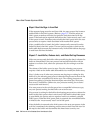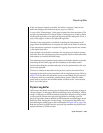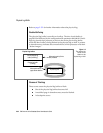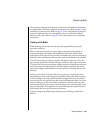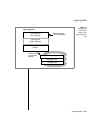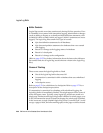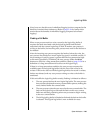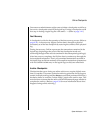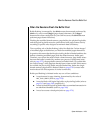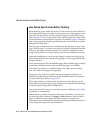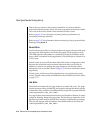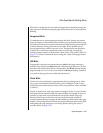
2-70 IBM Informix OnLine Database Server Administrator’s Guide
OnLine Checkpoints
OnLine Checkpoints
The term checkpoint refers to the point in OnLine operation when the pages
on disk are synchronized with the pages in the shared-memory buffer pool.
When a checkpoint completes, all physical operations are complete and
OnLine is said to be physically consistent.
Outlined below are the main events that occur during a checkpoint. Refer to
page 2-72 for a detailed description of what happens during a checkpoint.
Main Events During a Checkpoint
■ Physical log buffer is flushed to the physical log.
■ Modified pages in the buffer pool are flushed to disk. Flushing is
performed as a chunk write.
■ Checkpoint record is written to the logical log buffer.
■ Physical log on disk is logically emptied (current entries can be
overwritten).
■ Logical log buffer is flushed to current logical log file on disk.
Initiating a Checkpoint
Any user process can initiate a check to determine if a checkpoint is needed.
A checkpoint is initiated under any one of four conditions:
■ The default checkpoint interval has elapsed (a default checkpoint
frequency is specified by the configuration parameter CKPTINTVL)
and one or more modifications have occurred since the last
checkpoint.
■ The physical log on disk becomes 75 percent full.
■ OnLine detects that the next logical log file to become current
contains the most-recent checkpoint record.
■ The OnLine administrator initiates a checkpoint from the
DB-Monitor, Force-Ckpt menu or from the command line using
tbmode -c.



